Motivation Theories in Organisations: Impact on Employee Performance
VerifiedAdded on 2023/03/24
|11
|915
|97
Essay
AI Summary
This essay examines the application of motivational theories within organisations, focusing on their impact on employee performance, particularly within sales departments. It analyses the influence of different leadership styles on motivation and employee output, referencing the role of managers in fostering enthusiasm and productivity. The essay delves into specific motivational theories such as Maslow's Hierarchy of Needs and ERG Theory, highlighting their usefulness for sales managers in understanding and addressing employee needs. It concludes by emphasising the importance of the Human Resource Department and the interplay between leadership, organisational structure, and culture in shaping employee motivation and overall company performance.
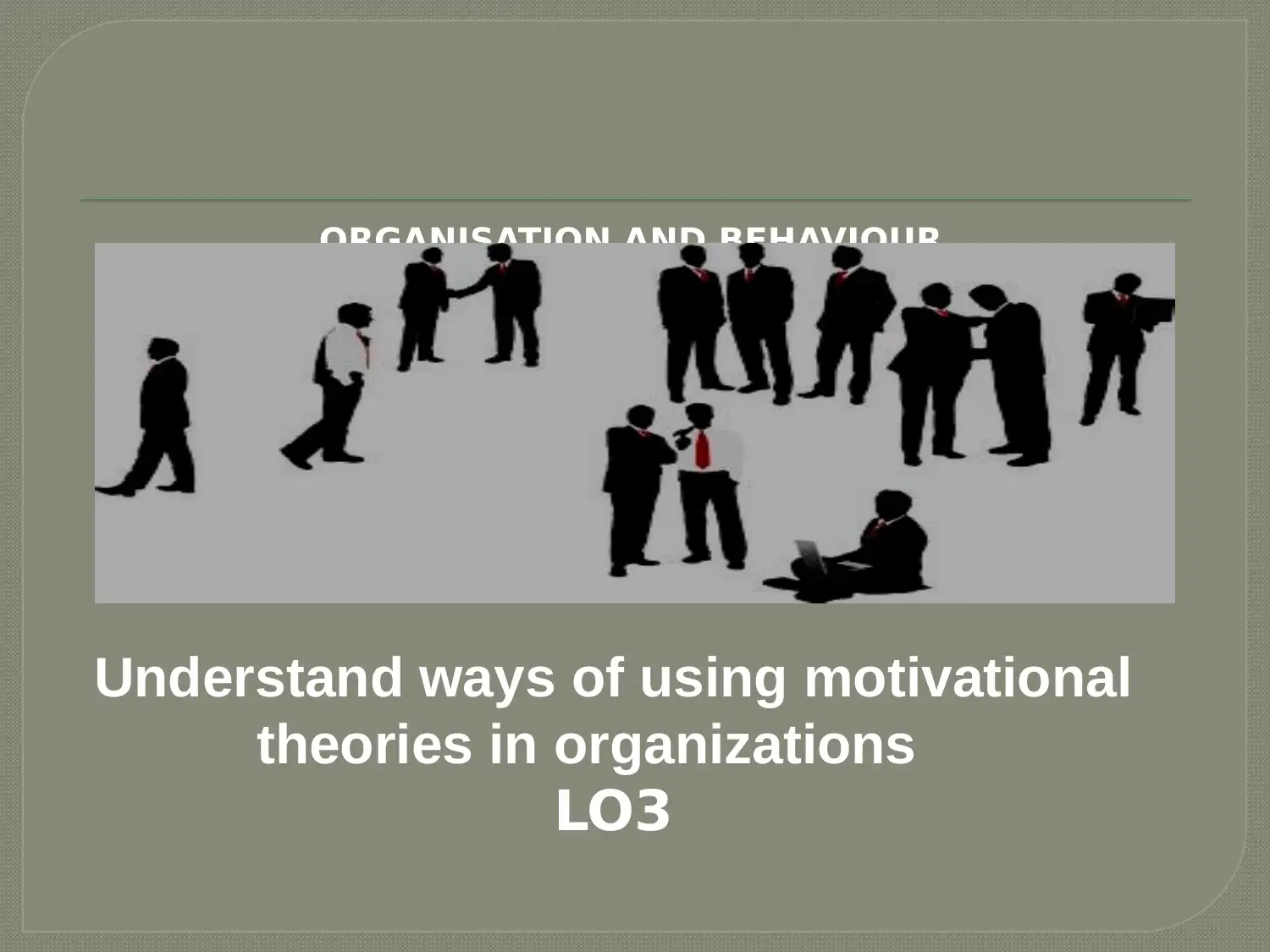
ORGANISATION AND BEHAVIOUR
Understand ways of using motivational
theories in organizations
LO3
Understand ways of using motivational
theories in organizations
LO3
Paraphrase This Document
Need a fresh take? Get an instant paraphrase of this document with our AI Paraphraser
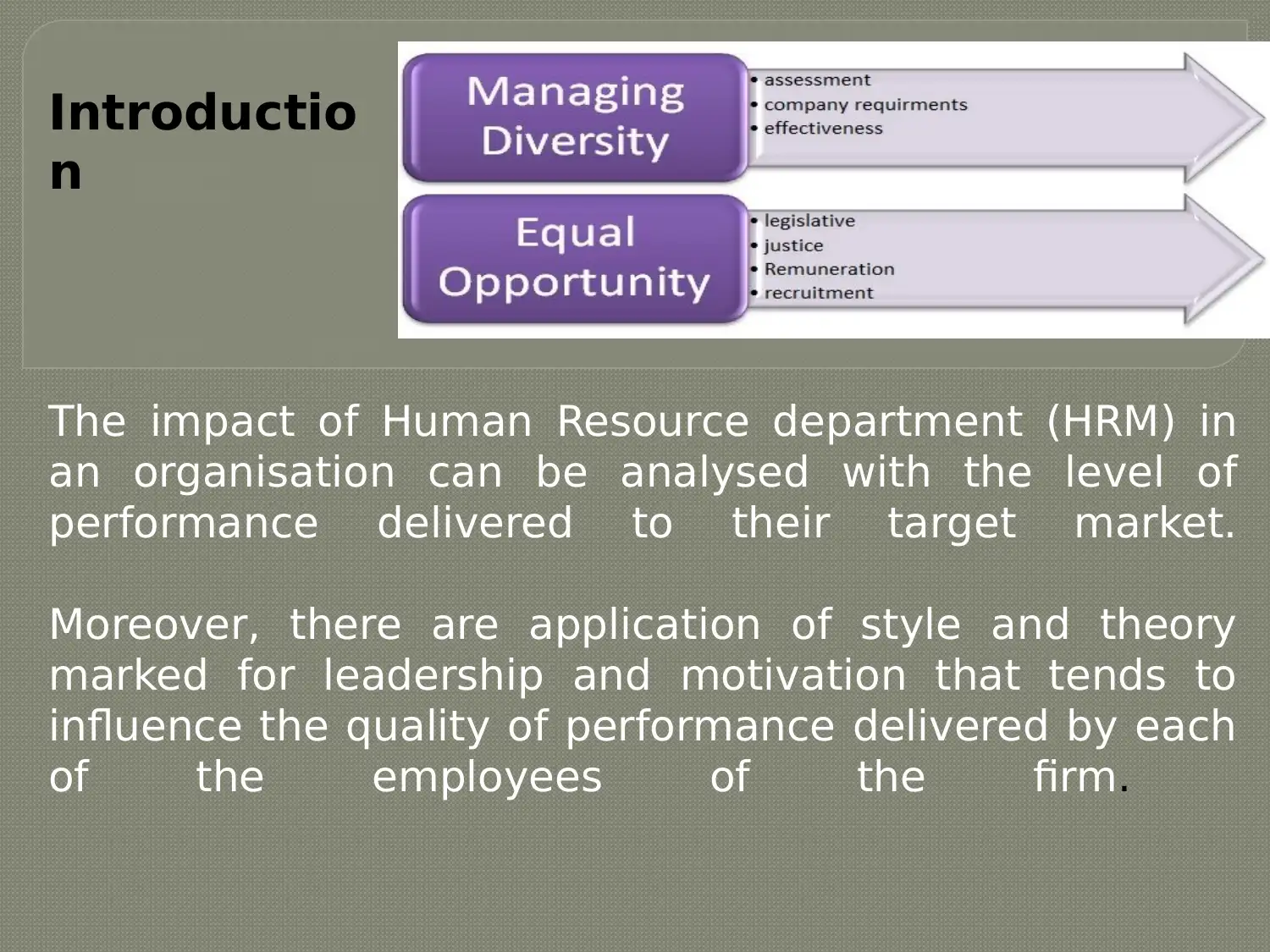
The impact of Human Resource department (HRM) in
an organisation can be analysed with the level of
performance delivered to their target market.
Moreover, there are application of style and theory
marked for leadership and motivation that tends to
influence the quality of performance delivered by each
of the employees of the firm.
Introductio
n
an organisation can be analysed with the level of
performance delivered to their target market.
Moreover, there are application of style and theory
marked for leadership and motivation that tends to
influence the quality of performance delivered by each
of the employees of the firm.
Introductio
n
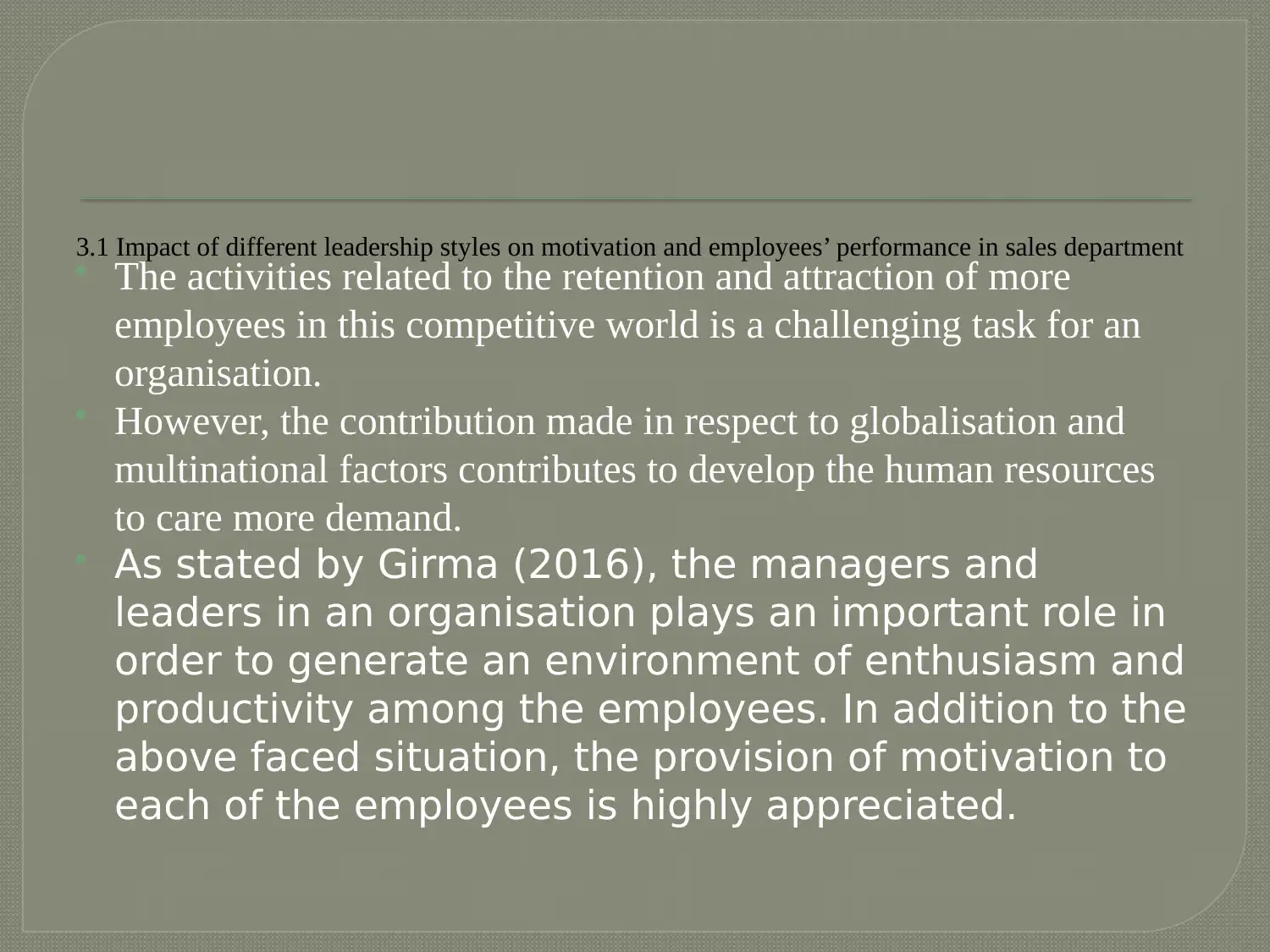
3.1 Impact of different leadership styles on motivation and employees’ performance in sales department
The activities related to the retention and attraction of more
employees in this competitive world is a challenging task for an
organisation.
However, the contribution made in respect to globalisation and
multinational factors contributes to develop the human resources
to care more demand.
As stated by Girma (2016), the managers and
leaders in an organisation plays an important role in
order to generate an environment of enthusiasm and
productivity among the employees. In addition to the
above faced situation, the provision of motivation to
each of the employees is highly appreciated.
The activities related to the retention and attraction of more
employees in this competitive world is a challenging task for an
organisation.
However, the contribution made in respect to globalisation and
multinational factors contributes to develop the human resources
to care more demand.
As stated by Girma (2016), the managers and
leaders in an organisation plays an important role in
order to generate an environment of enthusiasm and
productivity among the employees. In addition to the
above faced situation, the provision of motivation to
each of the employees is highly appreciated.
⊘ This is a preview!⊘
Do you want full access?
Subscribe today to unlock all pages.

Trusted by 1+ million students worldwide
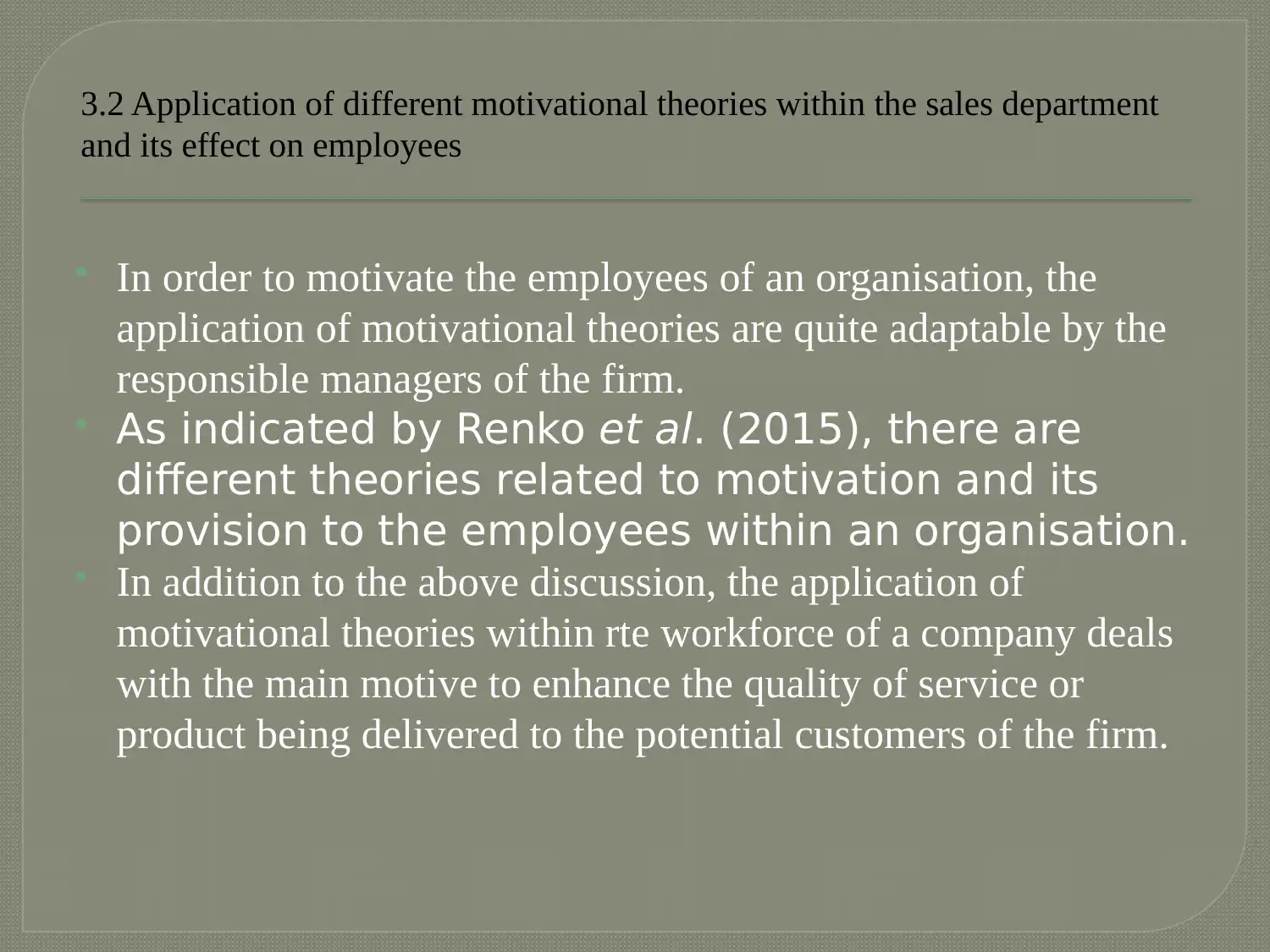
3.2 Application of different motivational theories within the sales department
and its effect on employees
In order to motivate the employees of an organisation, the
application of motivational theories are quite adaptable by the
responsible managers of the firm.
As indicated by Renko et al. (2015), there are
different theories related to motivation and its
provision to the employees within an organisation.
In addition to the above discussion, the application of
motivational theories within rte workforce of a company deals
with the main motive to enhance the quality of service or
product being delivered to the potential customers of the firm.
and its effect on employees
In order to motivate the employees of an organisation, the
application of motivational theories are quite adaptable by the
responsible managers of the firm.
As indicated by Renko et al. (2015), there are
different theories related to motivation and its
provision to the employees within an organisation.
In addition to the above discussion, the application of
motivational theories within rte workforce of a company deals
with the main motive to enhance the quality of service or
product being delivered to the potential customers of the firm.
Paraphrase This Document
Need a fresh take? Get an instant paraphrase of this document with our AI Paraphraser
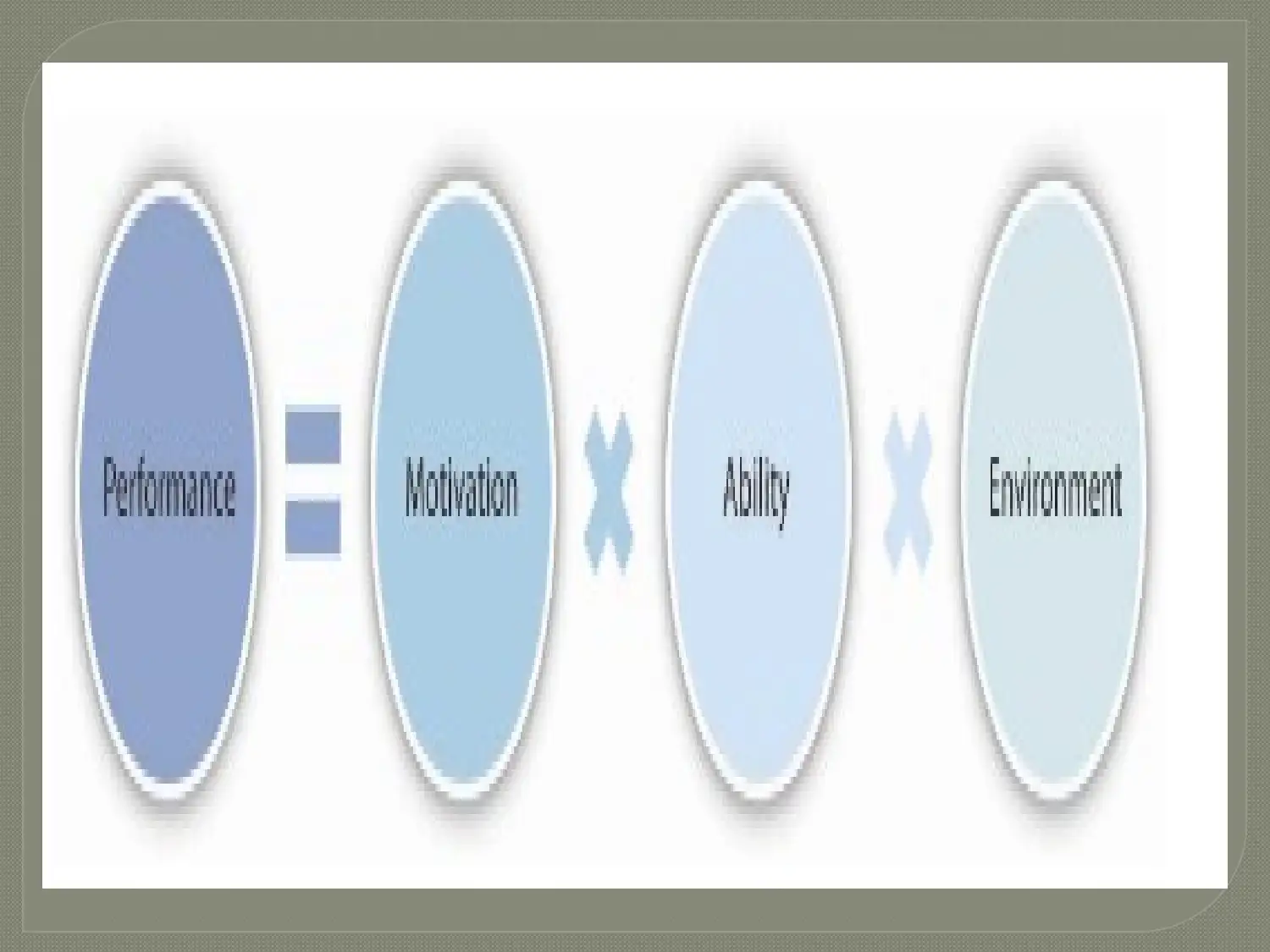
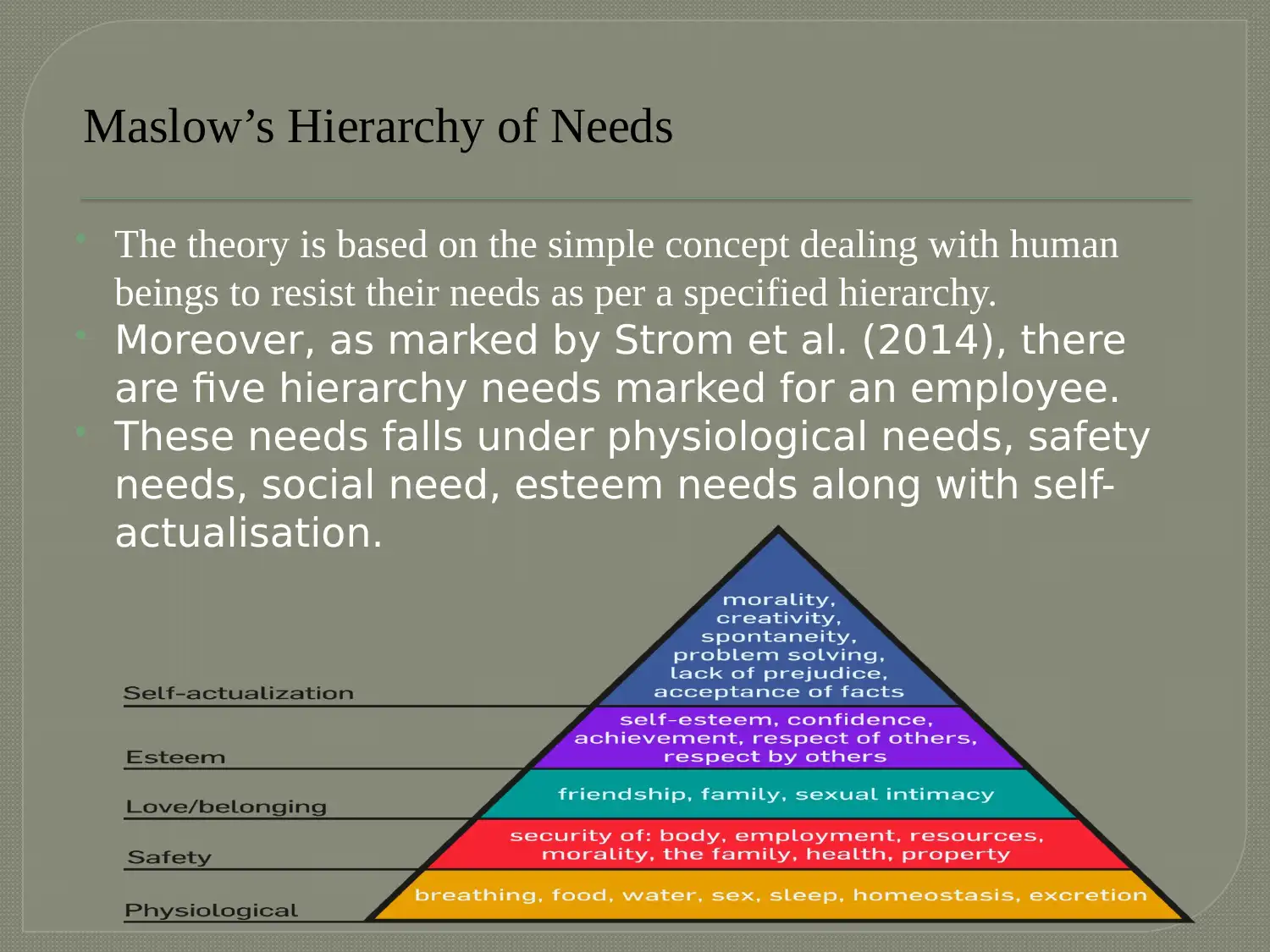
Maslow’s Hierarchy of Needs
The theory is based on the simple concept dealing with human
beings to resist their needs as per a specified hierarchy.
Moreover, as marked by Strom et al. (2014), there
are five hierarchy needs marked for an employee.
These needs falls under physiological needs, safety
needs, social need, esteem needs along with self-
actualisation.
The theory is based on the simple concept dealing with human
beings to resist their needs as per a specified hierarchy.
Moreover, as marked by Strom et al. (2014), there
are five hierarchy needs marked for an employee.
These needs falls under physiological needs, safety
needs, social need, esteem needs along with self-
actualisation.
⊘ This is a preview!⊘
Do you want full access?
Subscribe today to unlock all pages.

Trusted by 1+ million students worldwide
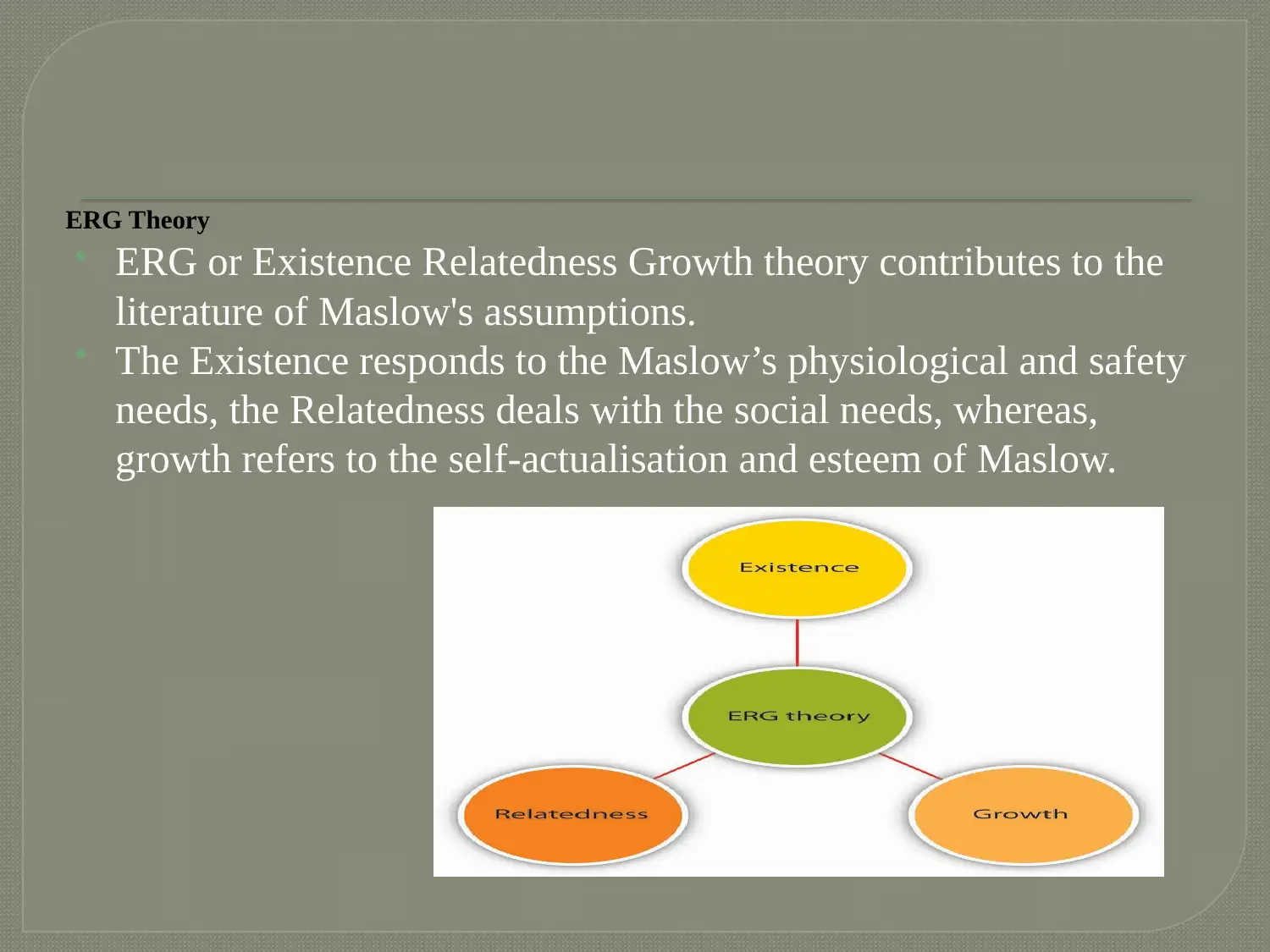
ERG Theory
ERG or Existence Relatedness Growth theory contributes to the
literature of Maslow's assumptions.
The Existence responds to the Maslow’s physiological and safety
needs, the Relatedness deals with the social needs, whereas,
growth refers to the self-actualisation and esteem of Maslow.
ERG or Existence Relatedness Growth theory contributes to the
literature of Maslow's assumptions.
The Existence responds to the Maslow’s physiological and safety
needs, the Relatedness deals with the social needs, whereas,
growth refers to the self-actualisation and esteem of Maslow.
Paraphrase This Document
Need a fresh take? Get an instant paraphrase of this document with our AI Paraphraser

3.3 Usefulness of motivation theory for sales managers
The motivation theory is beneficial for the sales managers as
through motivational theories, the managers are further able to
analyse the needs of each of the employees.
As indicated by Vann et al. (2014), there are different theories
of motivation each affecting the organisation in terms of key
support required by each of their employees.
Moreover, in case of ERG Theory, the main contribution of the
theory is to provide a clear hypothesis for the individuals that
are frustrated in the delivered atmosphere of their workforce.
The motivation theory is beneficial for the sales managers as
through motivational theories, the managers are further able to
analyse the needs of each of the employees.
As indicated by Vann et al. (2014), there are different theories
of motivation each affecting the organisation in terms of key
support required by each of their employees.
Moreover, in case of ERG Theory, the main contribution of the
theory is to provide a clear hypothesis for the individuals that
are frustrated in the delivered atmosphere of their workforce.
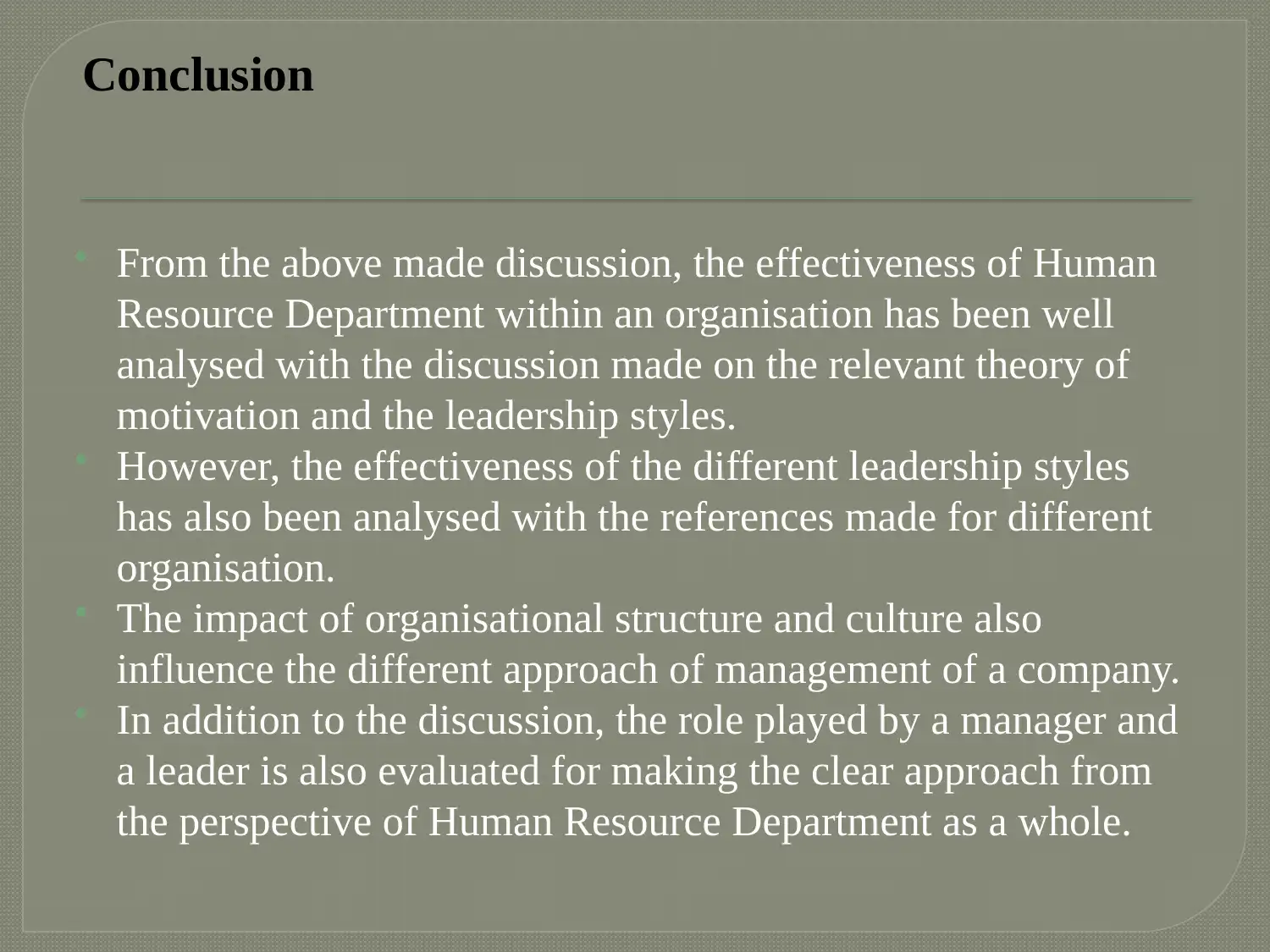
Conclusion
From the above made discussion, the effectiveness of Human
Resource Department within an organisation has been well
analysed with the discussion made on the relevant theory of
motivation and the leadership styles.
However, the effectiveness of the different leadership styles
has also been analysed with the references made for different
organisation.
The impact of organisational structure and culture also
influence the different approach of management of a company.
In addition to the discussion, the role played by a manager and
a leader is also evaluated for making the clear approach from
the perspective of Human Resource Department as a whole.
From the above made discussion, the effectiveness of Human
Resource Department within an organisation has been well
analysed with the discussion made on the relevant theory of
motivation and the leadership styles.
However, the effectiveness of the different leadership styles
has also been analysed with the references made for different
organisation.
The impact of organisational structure and culture also
influence the different approach of management of a company.
In addition to the discussion, the role played by a manager and
a leader is also evaluated for making the clear approach from
the perspective of Human Resource Department as a whole.
⊘ This is a preview!⊘
Do you want full access?
Subscribe today to unlock all pages.

Trusted by 1+ million students worldwide
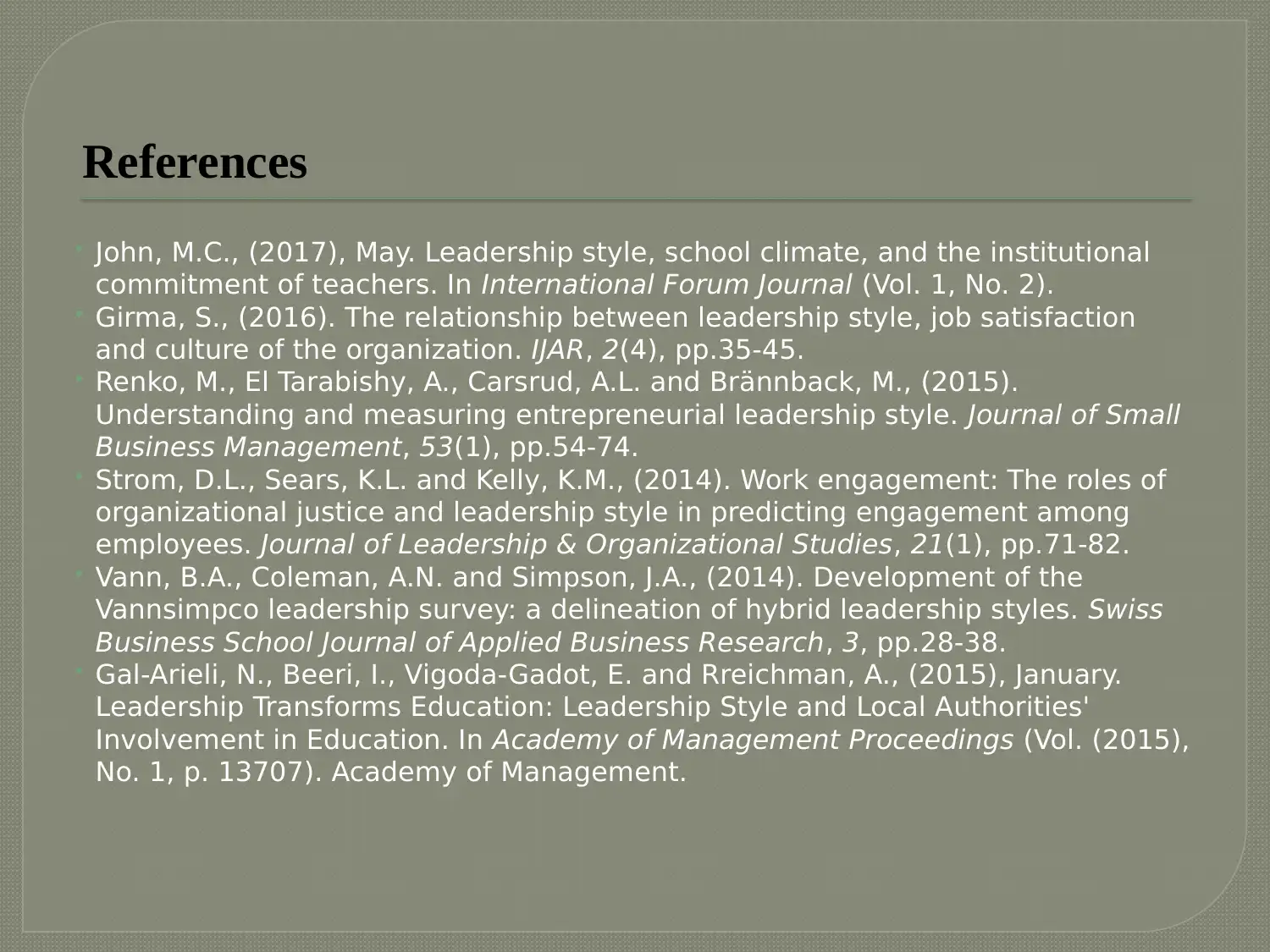
References
John, M.C., (2017), May. Leadership style, school climate, and the institutional
commitment of teachers. In International Forum Journal (Vol. 1, No. 2).
Girma, S., (2016). The relationship between leadership style, job satisfaction
and culture of the organization. IJAR, 2(4), pp.35-45.
Renko, M., El Tarabishy, A., Carsrud, A.L. and Brännback, M., (2015).
Understanding and measuring entrepreneurial leadership style. Journal of Small
Business Management, 53(1), pp.54-74.
Strom, D.L., Sears, K.L. and Kelly, K.M., (2014). Work engagement: The roles of
organizational justice and leadership style in predicting engagement among
employees. Journal of Leadership & Organizational Studies, 21(1), pp.71-82.
Vann, B.A., Coleman, A.N. and Simpson, J.A., (2014). Development of the
Vannsimpco leadership survey: a delineation of hybrid leadership styles. Swiss
Business School Journal of Applied Business Research, 3, pp.28-38.
Gal-Arieli, N., Beeri, I., Vigoda-Gadot, E. and Rreichman, A., (2015), January.
Leadership Transforms Education: Leadership Style and Local Authorities'
Involvement in Education. In Academy of Management Proceedings (Vol. (2015),
No. 1, p. 13707). Academy of Management.
John, M.C., (2017), May. Leadership style, school climate, and the institutional
commitment of teachers. In International Forum Journal (Vol. 1, No. 2).
Girma, S., (2016). The relationship between leadership style, job satisfaction
and culture of the organization. IJAR, 2(4), pp.35-45.
Renko, M., El Tarabishy, A., Carsrud, A.L. and Brännback, M., (2015).
Understanding and measuring entrepreneurial leadership style. Journal of Small
Business Management, 53(1), pp.54-74.
Strom, D.L., Sears, K.L. and Kelly, K.M., (2014). Work engagement: The roles of
organizational justice and leadership style in predicting engagement among
employees. Journal of Leadership & Organizational Studies, 21(1), pp.71-82.
Vann, B.A., Coleman, A.N. and Simpson, J.A., (2014). Development of the
Vannsimpco leadership survey: a delineation of hybrid leadership styles. Swiss
Business School Journal of Applied Business Research, 3, pp.28-38.
Gal-Arieli, N., Beeri, I., Vigoda-Gadot, E. and Rreichman, A., (2015), January.
Leadership Transforms Education: Leadership Style and Local Authorities'
Involvement in Education. In Academy of Management Proceedings (Vol. (2015),
No. 1, p. 13707). Academy of Management.
Paraphrase This Document
Need a fresh take? Get an instant paraphrase of this document with our AI Paraphraser

1 out of 11
Related Documents
Your All-in-One AI-Powered Toolkit for Academic Success.
+13062052269
info@desklib.com
Available 24*7 on WhatsApp / Email
![[object Object]](/_next/static/media/star-bottom.7253800d.svg)
Unlock your academic potential
Copyright © 2020–2025 A2Z Services. All Rights Reserved. Developed and managed by ZUCOL.




